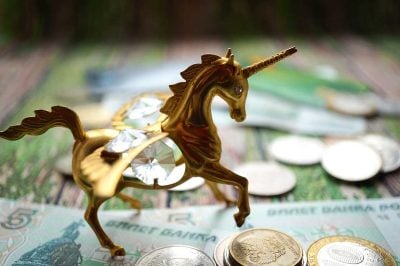This article was produced with the support of DMG Events
Over the past 25 years Namibia has enjoyed commendable economic expansion, averaging an impressive 4.5% per annum, which has elevated the country to upper-middle-income status. However, since 2015, growth has decelerated, revealing deep-seated structural challenges that need to be addressed to catalyse a new era of prosperity.
Central to this new growth agenda is the concept of green industrialisation – a response to a global agenda to decarbonise hard as we seek a carbon-neutral existence. The core catalyst for this opportunity in Namibia is green hydrogen, a key store of renewable energy that presents a unique pathway for the country to transcend its current economic limitations and embrace a future characterised by high productivity, enhanced domestic skills, new market opportunities, increased private investment, and robust climate resilience.
The vision is clear: Namibia can harness green hydrogen as a means not only to drive its own economic revitalisation, but also to position itself as a key facilitator of intra-regional trade and a strategic player in the global movement towards a sustainable and low-carbon future.
Historical economic context
Namibia’s economic landscape has been shaped by significant achievements and persistent challenges. The nation’s small population of just over 3m constrains the scope for local product development aimed at the domestic market. This limitation is compounded by the heavy reliance on South Africa as the main trading partner, making the economy vulnerable to the economic cycles of its neighbour.
Furthermore, Namibia’s export structure is heavily concentrated in natural resource sectors, with diamonds, uranium, gold, copper, fish, meat and tourism (principally driven by the country’s nature and wildlife) forming the backbone of its revenue streams.
This dependency on extractive industries exposes the national income to the volatility of global commodity prices, underscoring the urgent need for economic diversification. Additionally, the economy relies heavily on the agricultural sector for employment creation, making it vulnerable to any adverse environmental conditions.
Global economic trends and climate change
The rapid global shift towards net-zero emissions and sustainable practices is reshaping the prospective economic landscape, presenting new markets and opportunities for nations that can adapt swiftly to these revised priorities. The increasing global urgency to address climate change is mobilising both minds and money, making assets with strong green credentials highly attractive to investors.
Governments and private entities that embrace the green agenda are well positioned to secure capital and drive economic growth in this new era. While Namibia may have been one of the earlier African states to recognise this opportunity, under the charismatic leadership of our late president Dr Hage G Geingob, the formation of the ten-member Africa Green Hydrogen Alliance underscores that the continent is now well awake to this emerging generational opportunity. A plethora of fiscal incentives, policy documents and prospective bespoke pieces of legislation have since emerged from Morocco and Mauritania, Egypt, Kenya and South Africa.
Green industrialisation as a solution
Like us, many of our African peers are not content with looking to produce green hydrogen for export only. Rather, the galvanising continental vision emphasises transitioning to an open, resource-based, and diversified economy, focusing on export-oriented manufacturing and knowledge-intensive industries.
Key strategies include promoting export development, enhancing efficient production, ensuring external debt sustainability, and developing an integrated industrial strategy. Namibia’s own Green Industrialisation Blueprint also highlights the importance of local valorisation of Namibia’s minerals and minerals imported from neighbouring countries, modernising agriculture, empowering women and disadvantaged groups, and fostering a highly skilled and productive labour force.
To achieve the goals and aspirations identified by our founding father, Dr Sam Nujoma, as enshrined in Vision 2030, Namibia must reduce its reliance on the primary sector and adopt policies that promote economic diversification and resilience to reach a higher growth path to create more jobs and business opportunities for many Namibians, thereby reducing income inequality.
Specifically, we foresee an opportunity to fast-track gross fixed formation, as the green hydrogen assets can underwrite the development of strategic public-sector infrastructure such as ports and rail, which will dovetail with key midstream assets such as transmission lines and a new hydrogen backbone.
Importantly, most of these assets may sprawl across more than one country, requiring strategic conversations between multiple nations, similarly to trends we are seeing across the European Union as its member states develop their own continental and integrated network of pipelines and sea-facing infrastructure designed to optimise effective trade.
Green industrialisation is emerging as a multifaceted solution that aligns domestic, regional, and global agendas. By capitalising on its renewable energy potential and strategic geographic location, Namibia can spearhead the development of a green industrial ecosystem that not only supports its own economic objectives but also contributes to the broader regional and global sustainability goals.
If executed diligently, this represents a pathway to overcome structural economic constraints while simultaneously fostering high-skill job creation, increased productivity, market expansion, and foreign direct investment.
The Global African Hydrogen Summit
These ambitions are set to be showcased in detail during the three-day Global African Hydrogen Summit. The gathering aspires to move beyond theoretical principles and PowerPoint presentations and rather delve into examining real projects under development in Namibia and the rest of the continent.
These discussions will be enhanced with in-depth masterclasses, practical insights from policy makers and private sector operators from around the world and, lastly, grounded with strategic visits to brick-and-mortar projects under development in the two emerging green hydrogen valleys in the south and central part of the country.
The world and Africa are set to convene in Windhoek in early September to reveal one of the most exciting industrial revolutions of our times. We look forward to witness history in the making, with you.

 Sign in with Google
Sign in with Google 



